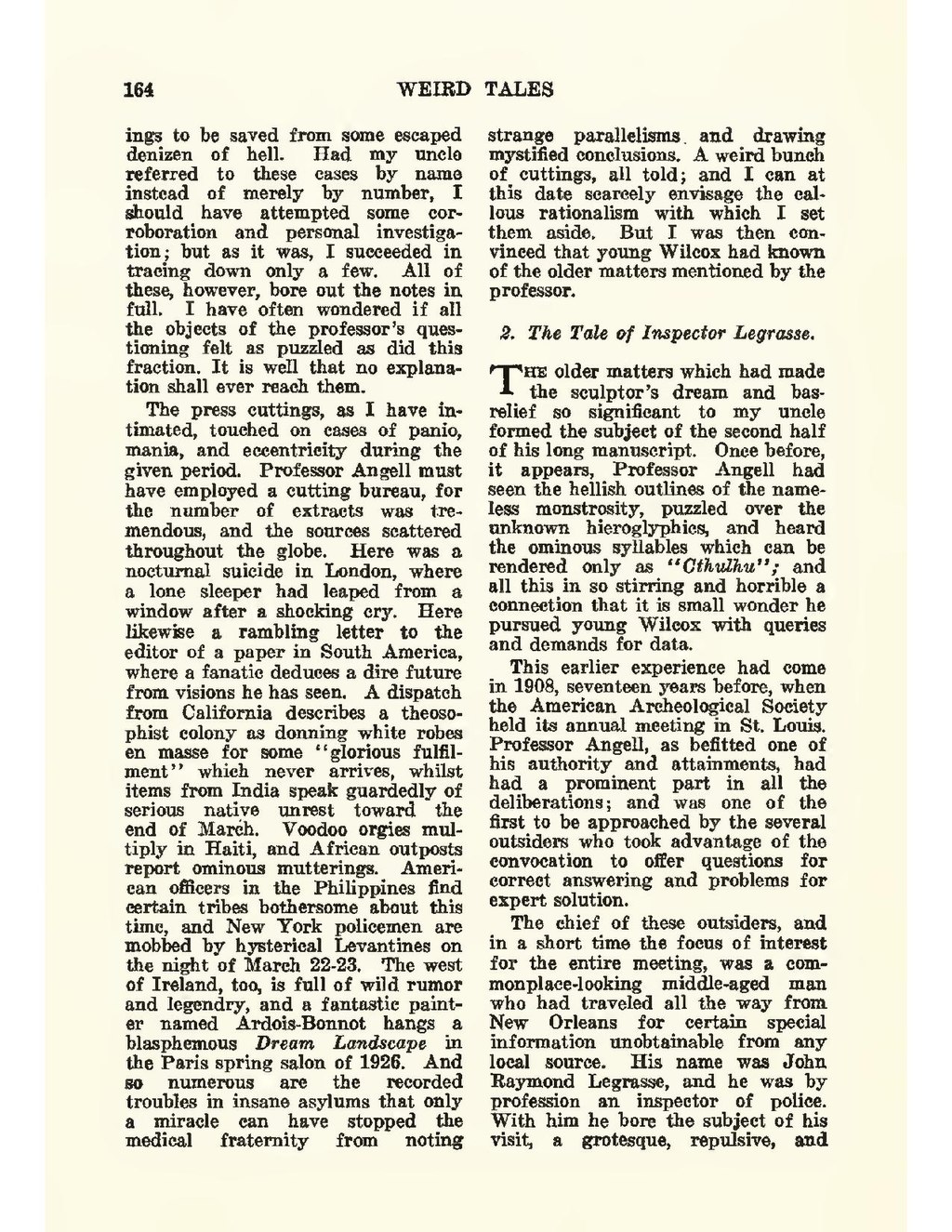ings to be saved from some escaped denizen of hell. Had my uncle referred to these cases by name instead of merely by number, I should have attempted some corroboration and personal investigation; but as it was, I succeeded in tracing down only a few. All of these, however, bore out the notes in full. I have often wondered if all the objects of the professor’s questioning felt as puzzled as did this fraction. It is well that no explanation shall ever reach them.
The press cuttings, as I have intimated, touched on cases of panic, mania, and eccentricity during the given period. Professor Angell must have employed a cutting bureau, for the number of extracts was tremendous, and the sources scattered throughout the globe. Here was a nocturnal suicide in London, where a lone sleeper had leaped from a window after a shocking cry. Here likewise a rambling letter to the editor of a paper in South America, where a fanatic deduces a dire future from visions he has seen. A dispatch from California describes a theosophist colony as donning white robes en masse for some “glorious fulfilment” which never arrives, whilst items from India speak guardedly of serious native unrest toward the end of March. Voodoo orgies multiply in Haiti, and African outposts report ominous mutterings. American officers in the Philippines find certain tribes bothersome about this time, and New York policemen are mobbed by hysterical Levantines on the night of March 22-23. The west of Ireland, too, is full of wild rumor and legendry, and a fantastic painter named Ardois-Bonnot hangs a blasphemous Dream Landscape in the Paris spring salon of 1926. And so numerous are the recorded troubles in insane asylums that only a miracle can have stopped the medical fraternity from noting strange parallelisms, and drawing mystified conclusions. A weird bunch of cuttings, all told; and I can at this date scarcely envisage the callous rationalism with which I set them aside. But I was then convinced that young Wilcox had known of the older matters mentioned by the professor.
2. The Tale of Inspector Legrasse.
The older matters which had made the sculptor’s dream and bas-relief so significant to my uncle formed the subject of the second half of his long manuscript. Once before, it appears, Professor Angell had seen the hellish outlines of the nameless monstrosity, puzzled over the unknown hieroglyphics, and heard the ominous syllables which can be rendered only as “Cthulhu”; and all this in so stirring and horrible a connection that it is small wonder he pursued young Wilcox with queries and demands for data.
This earlier experience had come in 1908, seventeen years before, when the American Archeological Society held its annual meeting in St. Louis. Professor Angell, as befitted one of his authority and attainments, had had a prominent part in all the deliberations; and was one of the first to be approached by the several outsiders who took advantage of the convocation to offer questions for correct answering and problems for expert solution.
The chief of these outsiders, and in a short time the focus of interest for the entire meeting, was a commonplace-looking middle-aged man who had traveled all the way from New Orleans for certain special information unobtainable from any local source. His name was John Raymond Legrasse, and he was by profession an inspector of police. With him he bore the subject of his visit, a grotesque, repulsive, and
